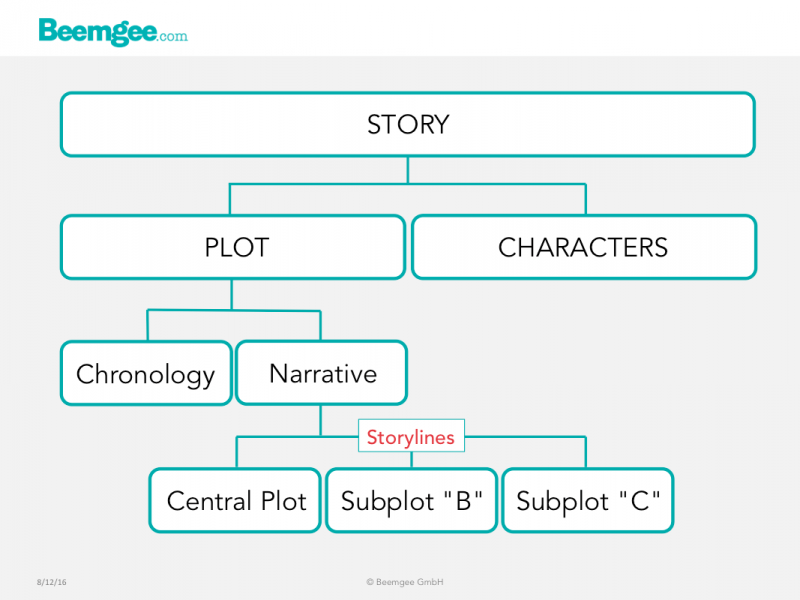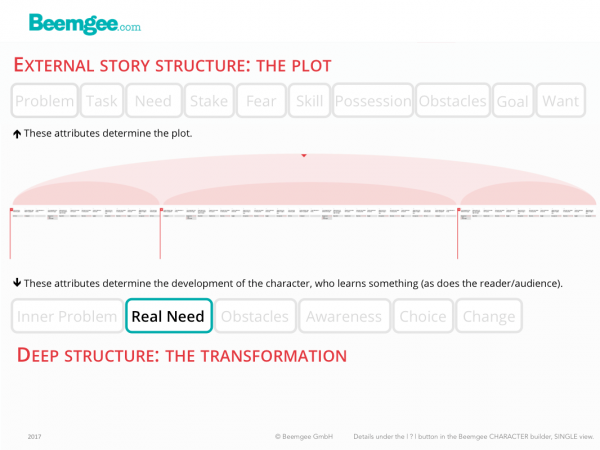A plot arises out of the actions and interactions of the characters.
On the whole, you need at least two characters to create a plot. Add even more characters to the mix, and you’ll have possibilities for more than one plot.
Most stories consist of more than one plot. Each such plot is a self-contained storyline.

The Central Plot
Often there is a central plot and at least one subplot. The central plot is usually the one that arcs across the entire narrative, from the onset of the external problem (the “inciting incident” for one character) to its resolution. This is the plot that is at the(more…)
In stories, characters are faced with obstacles.
These obstacles come in various forms and degrees of magnitude. And they may have different dimensions: they may be internal, external, or antagonistic.
Often the obstacles that resound most with a significant proportion of the audience are the ones that force the main characters to face and deal with problems within themselves, in their nature. In other words, with their internal problem.
Internal obstacles are the symptoms of the characters’ flaws, of the internal problem. The audience perceives them as scenes in which the character’s flaw prevents her progress.
Not every story features characters with internal problems. An internal problem is not strictly speaking necessary in order to create an exciting story.
But it helps.
The Emotional Truth
An internal problem makes the character appear fallible – and thus more credible, more human, more like us. Internal problems are invariably emotional and private. They express(more…)
In most stories, what a character really needs is growth.

Characters display flaws or shortcomings near the beginning of the story as well as wants. What they really need to do in order to achieve what they want is likely to be something they need to become aware of first.
The real need relates to the internal problem in the same way the perceived need relates to the external problem. The character has some sort of dysfunction that really needs to be repaired.
That means the audience or reader may become aware of a character’s real need long before the character does.
To recap: The usual mode in storytelling has a character consciously responding to an external problem with a want, a goal, and a number of perceived needs. Unconsciously, that character may well have a character trait that amounts to an internal problem, out of which arises that character’s real need – i.e. to solve the internal problem.
So if a character is selfish, the real need is to learn selflessness. If the character is overly proud, then he or she needs to gain some humility. In the movie Chef, the father neglects his son emotionally – his real need is to learn to involve the child in his own life. The audience sees this way before the Chef does.
Even stories in which the external problem provides the entertainment – and with that the raison d’être of the story – may profit from(more…)
What’s the problem? Does the character know?
In storytelling, discrepancy between a character’s awareness and the awareness-levels of others is one of the most powerful devices an author can use. “Others” refers here not just to other characters, but to the narrator and – most significantly – to the audience/reader.
Let’s sum up potential differences in knowledge or awareness:
- A character’s awareness of his or her own internal problem or motivation
- A difference between one character’s knowledge of what’s going on and another’s
- The narrator knows more about what is going on than the character
- The audience/reader knows more than the character – dramatic irony
In this post, we’ll concentrate on the first point: Awareness of the internal problem. We’ll break that down into
- Becoming Aware – the importance of the revelation
- The Story Journey – and where to place the revelation
- Surface Structure and Deep Structure
- The Need for Awareness – or, Alternatives to Revelation
Becoming Aware – the importance of the revelation (more…)


